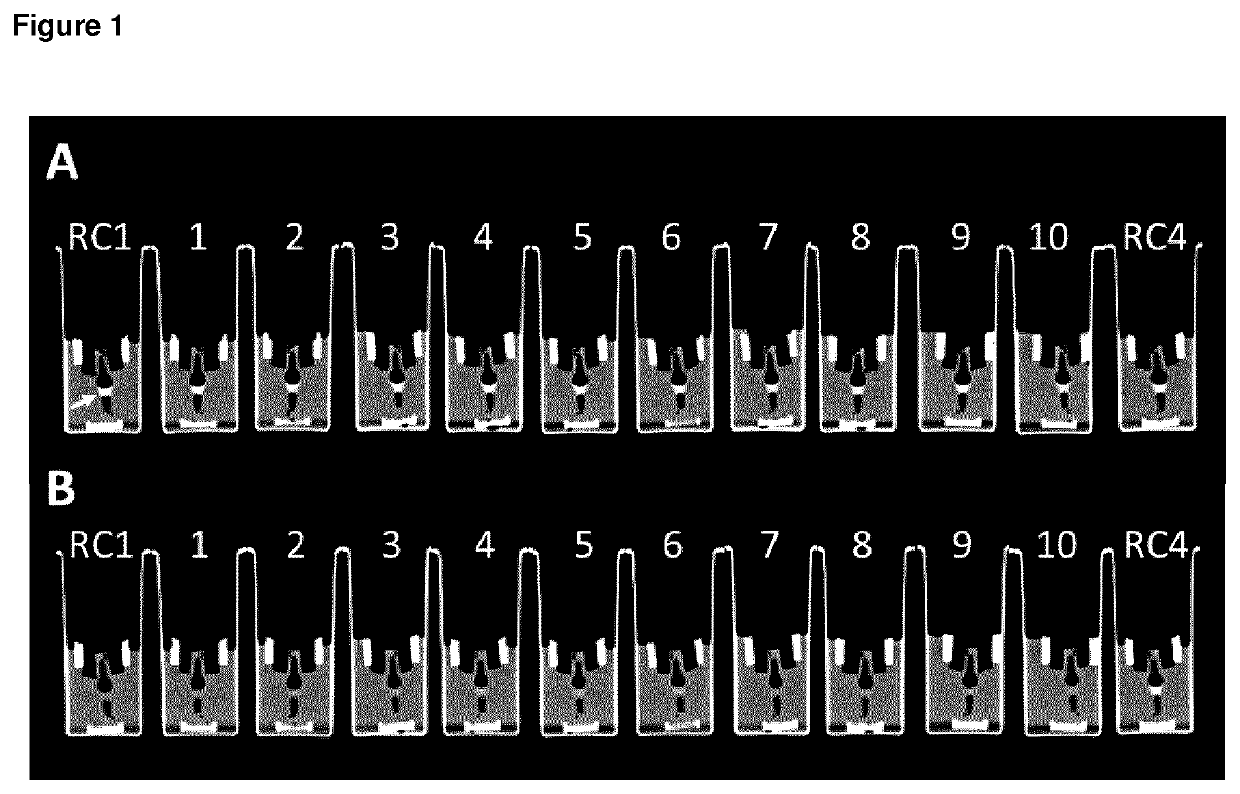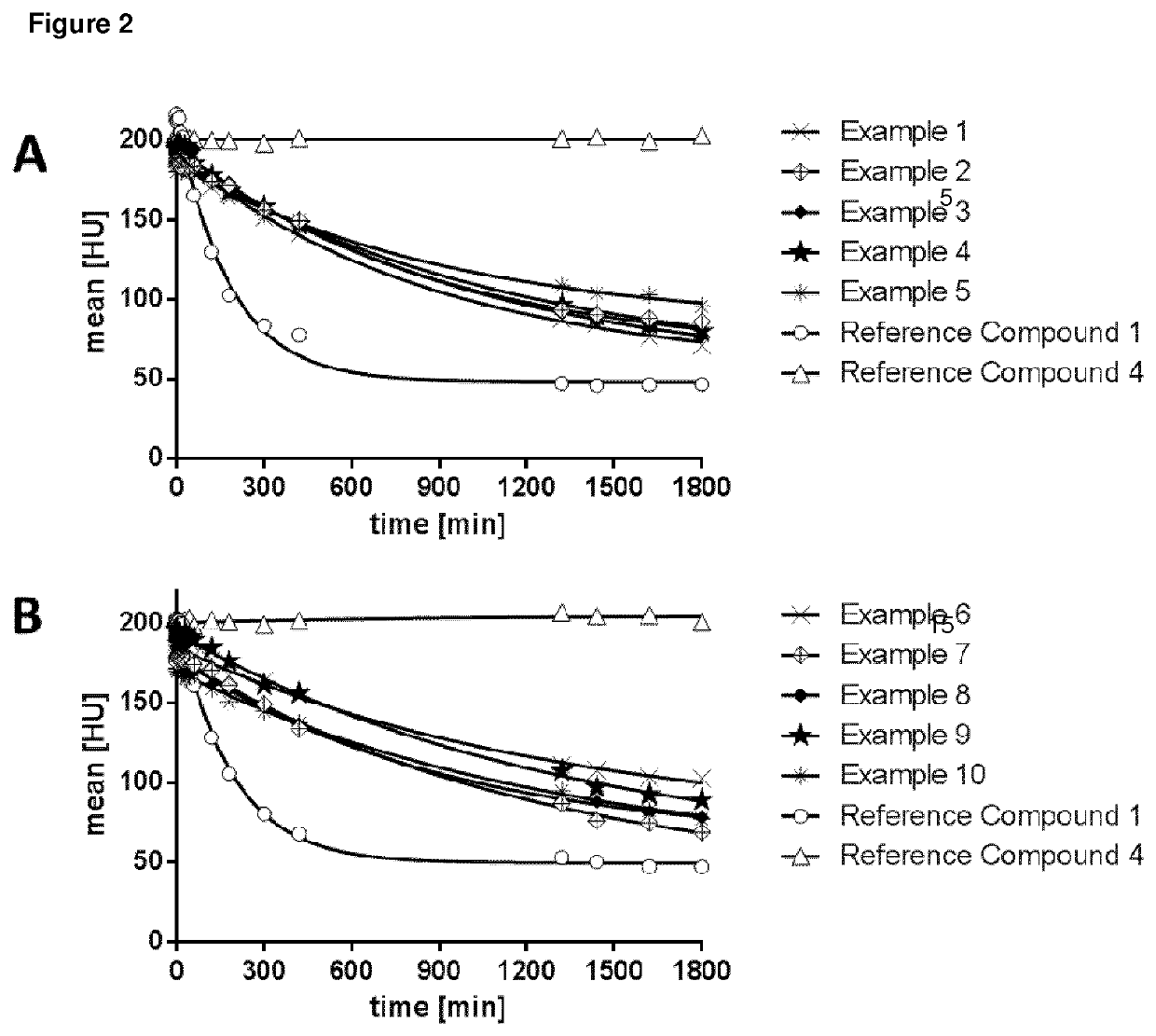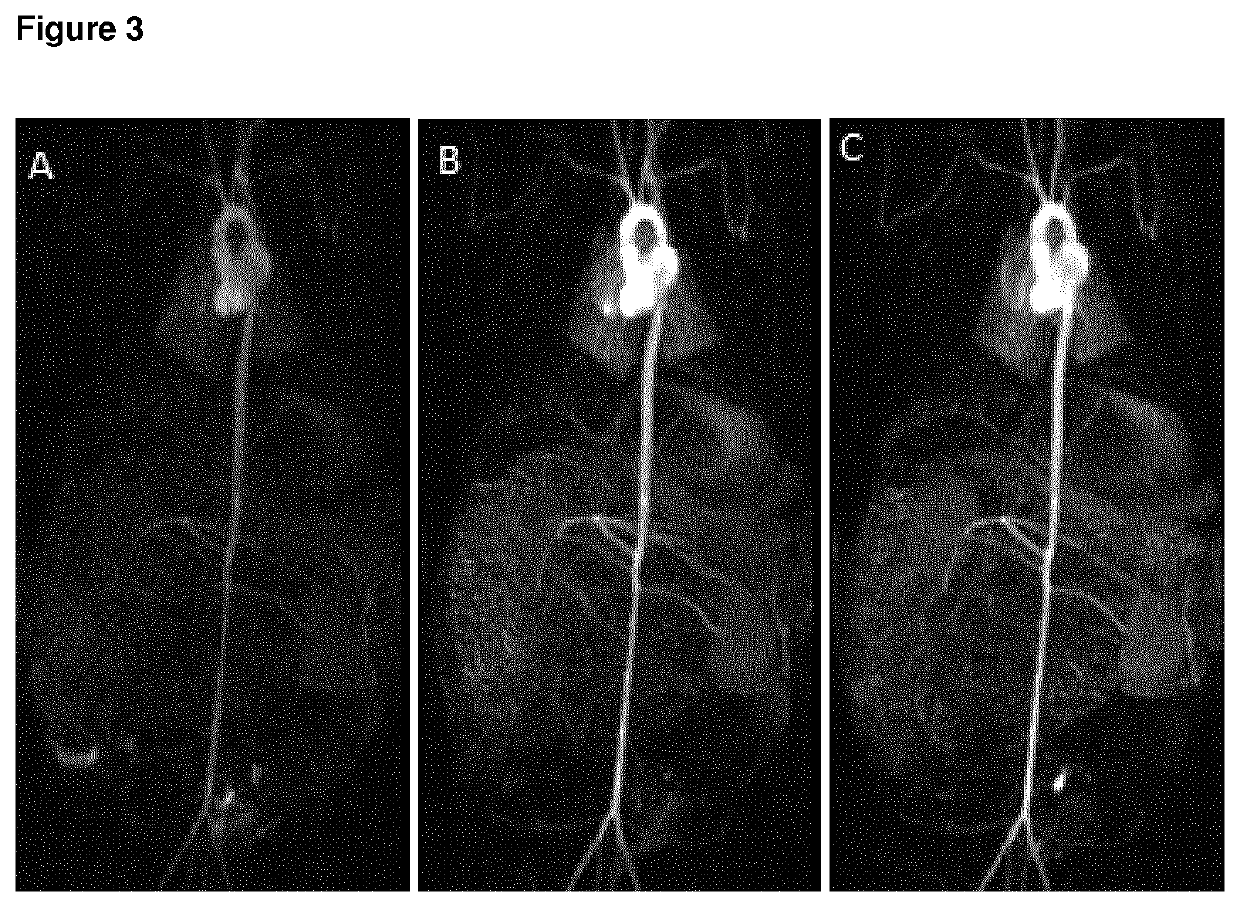High relaxivity gadolinium chelate compounds for use in magnetic resonance imaging
a technology of gadolinium chelate and magnetic resonance imaging, which is applied in the field of high relaxivity gadolinium chelate compounds for use in magnetic resonance imaging to achieve the effect of high relaxivity
- Summary
- Abstract
- Description
- Claims
- Application Information
AI Technical Summary
Benefits of technology
Problems solved by technology
Method used
Image
Examples
example 1-1
Tert-butyl N-(bromoacetyl)-N-methylglycinate
[0208]
[0209]A stirred suspension of 30.00 g (165.1 mmol, 1 eq.) tert-butyl N-methylglycinate hydrochloride (1:1) and 44.82 g (346.8 mmol, 2.1 eq.) N,N-diisopropyl ethylamine in 250 ml dichloromethane was cooled to −70° C. After slow addition of 35.67 g (176.7 mmol, 1.07 eq.) bromoacetyl bromide, dissolved in 70 ml dichloromethane, the reaction mixture was warmed over night to room temperature. The organic layer was washed twice with 0.1 M aqueous hydrochloric acid, with saturated aqueous sodium bicarbonate solution and with half saturated sodium chloride solution. After drying over sodium sulfate, the solvent was evaporated under reduced pressure yielding 34.62 g (79%, 130.1 mmol) of the title compound.
[0210]1H-NMR (400 MHz, DMSO-d6): b=1.36-1.47 (m, 9H), 2.80-3.08 (m, 3H), 3.94-4.47 (m, 4H) ppm.
[0211]LC-MS (ES+): m / z=266.1 and 268.1 (M+H)+; Rt=0.91 and 0.94 min.
example 1-2
Tert-butyl N-methyl-N-{[4,7,10-tris(2-tert-butoxy-2-oxoethyl)-1,4,7,10-tetraazacyclo-dodecan-1-yl]acetyl}glycinate
[0212]
[0213]To a solution of 6.98 g (13.56 mmol, 1 eq.) tri-tert-butyl 2,2′,2″-(1,4,7,10-tetraazacyclododecane-1,4,7-triyl)triacetate {CAS No. [122555-91-3]; see B. Jagadish et al., THL 52(17), 2058-2061 (2011)} in 175 ml acetonitrile were added 5.62 g (40.69 mmol, 3 eq.) potassium carbonate and 3.80 g (13.56 mmol, 1 eq.) tert-butyl N-(bromoacetyl)-N-methylglycinate (example 1-1). The resulting reaction mixture was stirred over night at 60° C. After filtration, the solution was evaporated under reduced pressure to dryness. The residue was purified by chromatography yielding 6.63 g (70%, 9.48 mmol) of the title compound.
[0214]1H-NMR (400 MHz, CDCl3): δ=1.38-1.50 (m, 36H), 1.90-4.00 (m, 29H) ppm.
[0215]LC-MS (ES+): m / z=700.5 (M+H)+; Rt=1.01 min.
example 1-3
N-methyl-N-{[4,7,10-tris(carboxymethyl)-1,4,7,10-tetraazacyclododecan-1-yl]acetyl}-glycine
[0216]
[0217]12.29 g (17.56 mmol) Tert-butyl N-methyl-N-{[4,7,10-tris(2-tert-butoxy-2-oxoethyl)-1,4,7,10-tetraazacyclododecan-1-yl]acetyl}glycinate (example 1-2) were dissolved in 300 ml formic acid. The solution was stirred for two hours at 80° C. After evaporation under reduced pressure, the residue was dissolved in 600 ml water and was washed repeatedly with dichloromethane. The aqueous layer was dried by lyophilization yielding 8.04 g (96%, 16.90 mmol) of the title compound.
[0218]1H-NMR (400 MHz, D2O): δ=2.81-2.94 (m, 3H), 2.95-4.05 (m, 26H) ppm.
[0219]LC-MS (ES+): m / z=476.2 (M+H)+; Rt=0.22 min.
PUM
 Login to View More
Login to View More Abstract
Description
Claims
Application Information
 Login to View More
Login to View More - R&D
- Intellectual Property
- Life Sciences
- Materials
- Tech Scout
- Unparalleled Data Quality
- Higher Quality Content
- 60% Fewer Hallucinations
Browse by: Latest US Patents, China's latest patents, Technical Efficacy Thesaurus, Application Domain, Technology Topic, Popular Technical Reports.
© 2025 PatSnap. All rights reserved.Legal|Privacy policy|Modern Slavery Act Transparency Statement|Sitemap|About US| Contact US: help@patsnap.com



